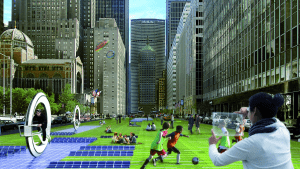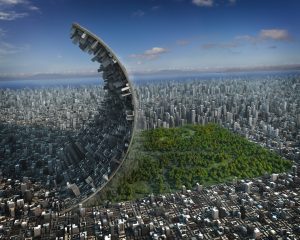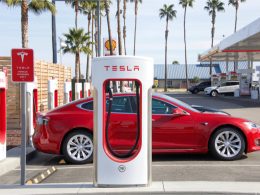Urbanization has been a defining feature of modern civilization, shaping economic growth, social dynamics, and environmental impact. As more people move to cities, the future of urbanization presents both significant opportunities and challenges. This article explores the trends shaping urbanization, the implications for society and the environment, and strategies for creating sustainable and resilient urban spaces.
Current Trends in Urbanization

Urbanization is accelerating globally, with more than half of the world’s population now living in cities. According to the United Nations, this trend is expected to continue, with urban populations projected to increase by 2.5 billion people by 2050. This rapid growth is driven by several factors:
- Economic Opportunities: Cities offer better job prospects, education, and healthcare compared to rural areas, drawing people in search of improved living standards.
- Technological Advancements: Innovations in transportation, communication, and infrastructure make urban living more feasible and attractive.
- Globalization: Increased connectivity and economic integration drive migration to urban centers, where economic activities and cultural exchanges are concentrated.
Implications for Society
Economic Impact
Urbanization fuels economic growth by concentrating resources, labor, and innovation. Cities are often economic powerhouses, driving national economies and offering diverse employment opportunities. However, this concentration can also lead to increased competition for jobs and resources, contributing to socioeconomic disparities.
Social Dynamics
Urban areas tend to be more diverse, offering a melting pot of cultures, lifestyles, and perspectives. While this diversity can enrich urban life, it can also lead to challenges in social cohesion and integration. Social inequalities can become more pronounced, with disparities in access to services and living conditions.
Health and Wellbeing
Cities can offer advanced healthcare and recreational facilities, enhancing quality of life. However, the high density and fast pace of urban living can contribute to stress, mental health issues, and chronic diseases. Urban areas often struggle with pollution and inadequate access to green spaces, impacting residents’ physical health.
Environmental Challenges
Resource Management
As cities expand, the demand for resources such as water, energy, and raw materials increases. Managing these resources sustainably is critical to prevent shortages and reduce environmental impact. Urban areas often face challenges related to waste management, pollution, and energy consumption.
Climate Change
Urban areas contribute significantly to greenhouse gas emissions due to high energy consumption and transportation needs. Additionally, cities are vulnerable to climate change impacts, such as heatwaves, flooding, and rising sea levels. Developing resilient infrastructure and sustainable practices is essential to mitigate these risks.
Biodiversity
Urban expansion often leads to habitat loss and reduced biodiversity. Green spaces and natural habitats are replaced with buildings and roads, affecting local flora and fauna. Balancing development with conservation efforts is crucial to preserving urban ecosystems
Strategies for Sustainable Urbanization
Smart Cities
The concept of smart cities leverages technology and data to enhance urban living. Innovations such as smart grids, intelligent transportation systems, and digital platforms improve efficiency and quality of life. Smart city initiatives focus on optimizing resource use, reducing waste, and improving connectivity.
Image by Pexels.com
Green Infrastructure
Incorporating green infrastructure into urban planning helps manage environmental challenges. Green roofs, urban parks, and sustainable drainage systems enhance urban resilience, reduce pollution, and promote biodiversity. Green building standards and renewable energy sources also contribute to sustainable urban development.
Inclusive Planning

Inclusive urban planning involves engaging diverse communities in the decision-making process. Ensuring equitable access to services, affordable housing, and public spaces helps address social disparities and improves overall quality of life. Participatory planning encourages community involvement and fosters social cohesion.
Transportation Innovations
Advancements in transportation can reduce the environmental impact of urban mobility. Promoting public transit, cycling, and walking, alongside developing electric and autonomous vehicles, can decrease reliance on fossil fuels and reduce congestion. Integrated transportation planning supports efficient and sustainable urban mobility.
Analysis Table
| Aspect | Challenges | Opportunities | Strategies |
| Economic Impact | Income inequality, job competition | Economic growth, innovation | Inclusive policies, job training programs |
| Social Dynamics | Social fragmentation, integration issues | Cultural diversity, enriched community life | Community engagement, social programs |
| Health | Pollution, mental health issues | Advanced healthcare, recreational facilities | Green spaces, wellness programs |
| Resource Management | Resource depletion, waste management | Efficient resource use, sustainable practices | Smart grids, recycling programs, resource conservation |
| Climate Change | Emissions, climate risks | Resilient infrastructure, energy efficiency | Climate adaptation strategies, renewable energy adoption |
| Biodiversity | Habitat loss, reduced green spaces | Urban ecosystems, biodiversity conservation | Green infrastructure, habitat restoration |
Comparative Table: Traditional vs. Sustainable Urbanization
| Feature | Traditional Urbanization | Sustainable Urbanization |
| Resource Use | High consumption, inefficient | Efficient, renewable resources |
| Environmental Impact | Significant pollution, habitat destruction | Low emissions, integrated green spaces |
| Infrastructure | Conventional, often outdated | Modern, smart, and resilient |
| Social Equity | Disparities in access to services | Equitable access, inclusive planning |
| Transportation | Car-centric, high congestion | Multi-modal, public transit, eco-friendly |
| Community Engagement | Limited, top-down decisions | Active participation, community-driven |
Conclusion
The future of urbanization is poised at a critical juncture, where the need for sustainable and resilient cities is more urgent than ever. By embracing innovative technologies, green infrastructure, and inclusive planning, urban areas can overcome the challenges of rapid growth and environmental degradation. The path forward requires a balanced approach that considers economic, social, and environmental dimensions to create cities that are not only thriving economic centers but also equitable and sustainable communities.
As we move towards 2050, the ability of cities to adapt and evolve will determine their success in providing a high quality of life for their residents while safeguarding the planet for future generations.












